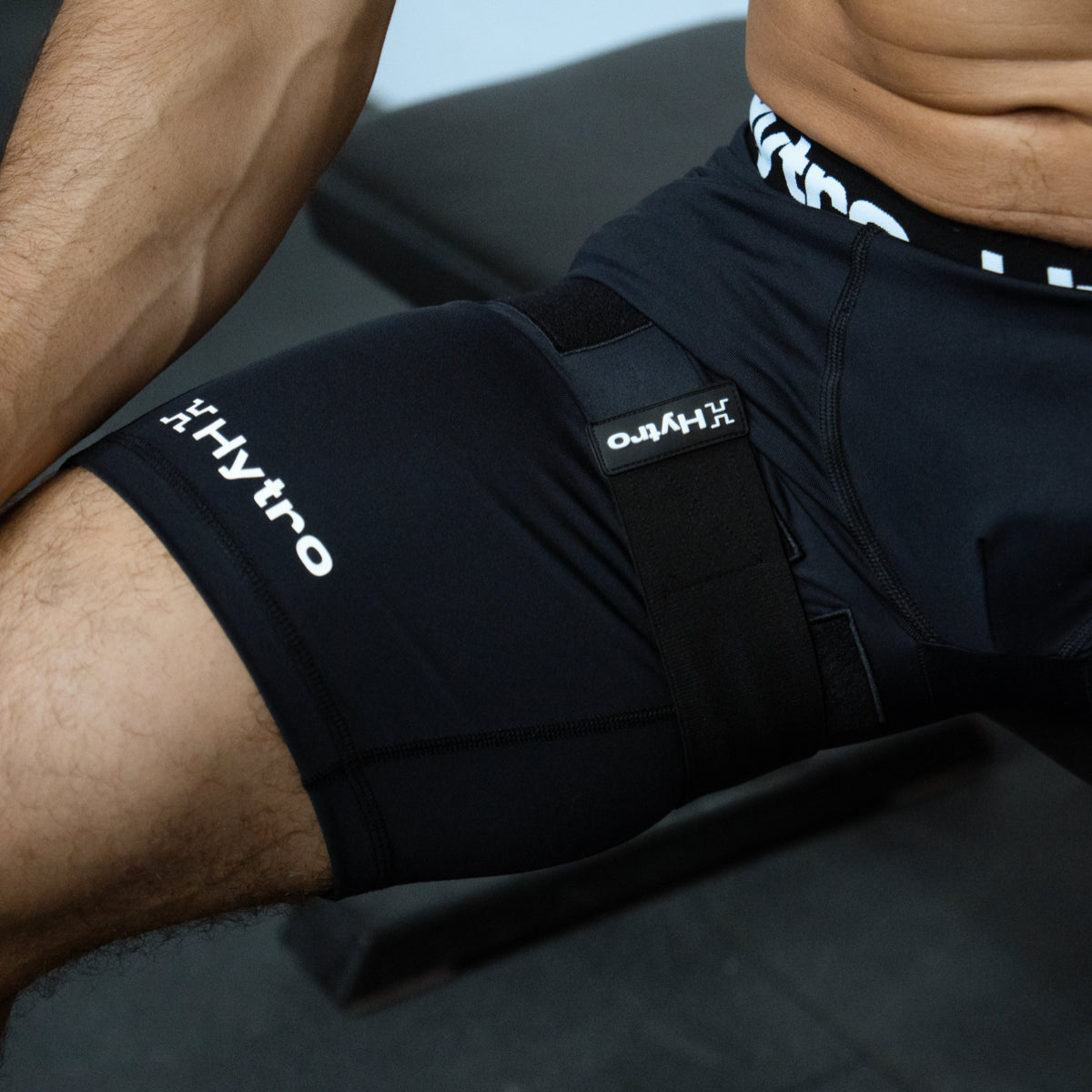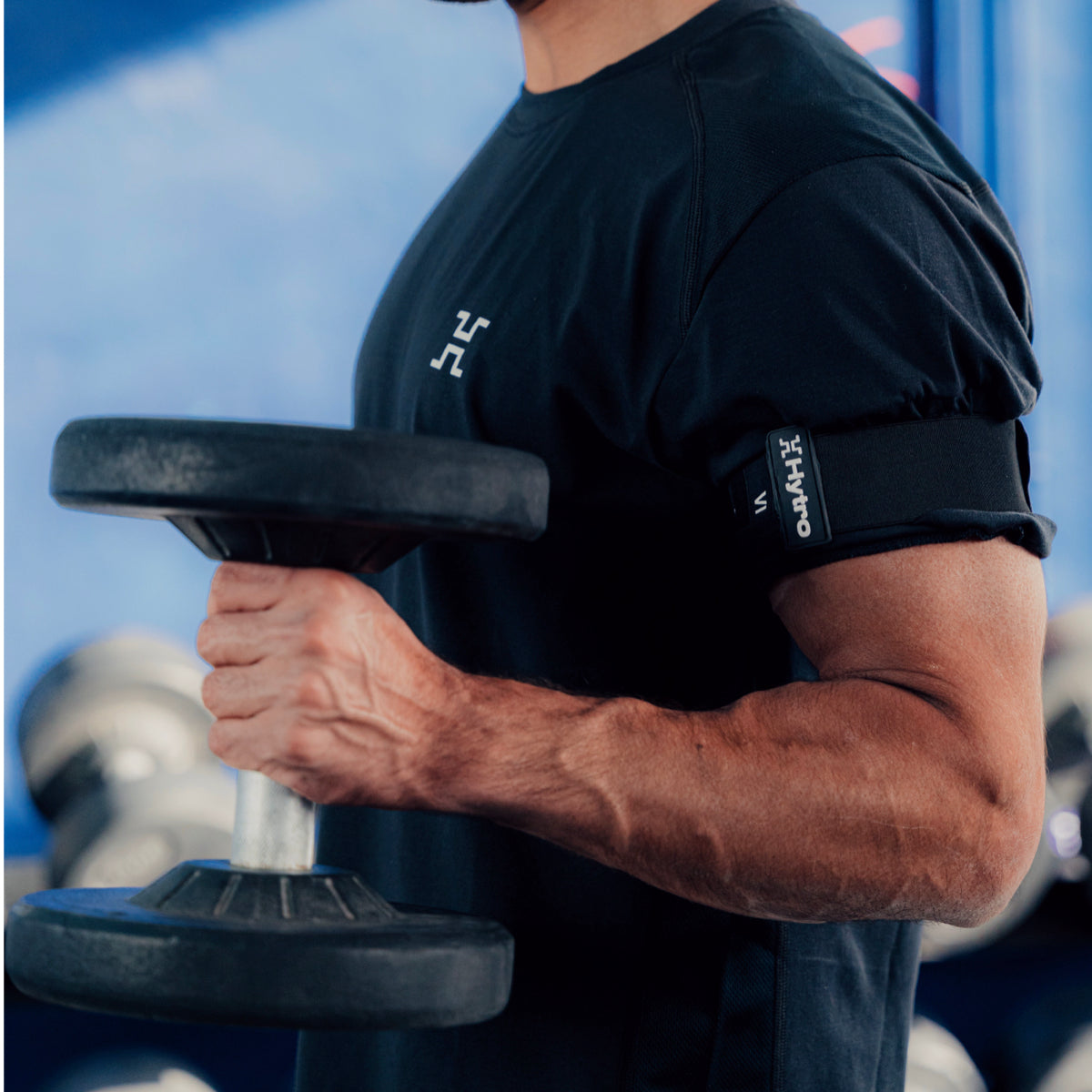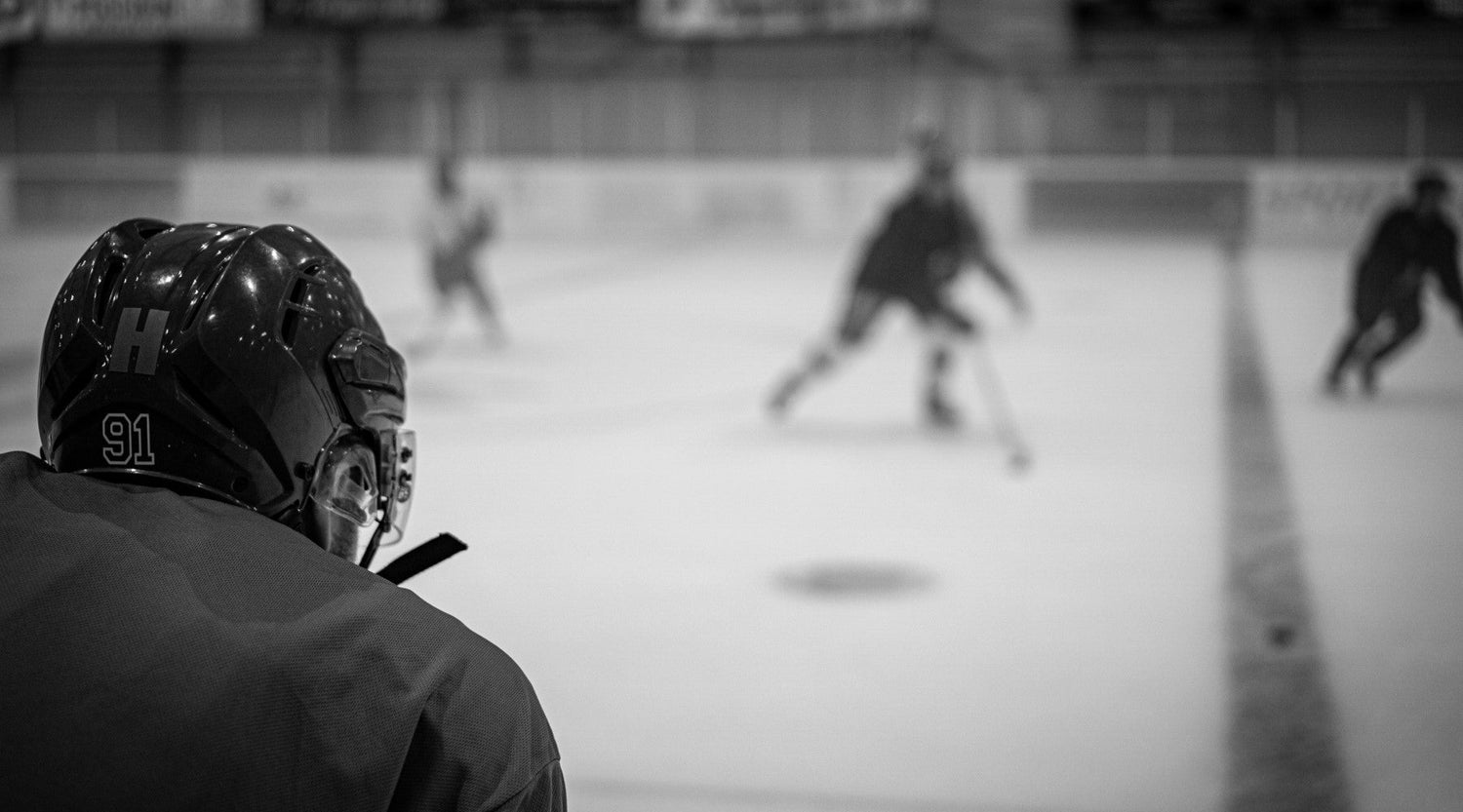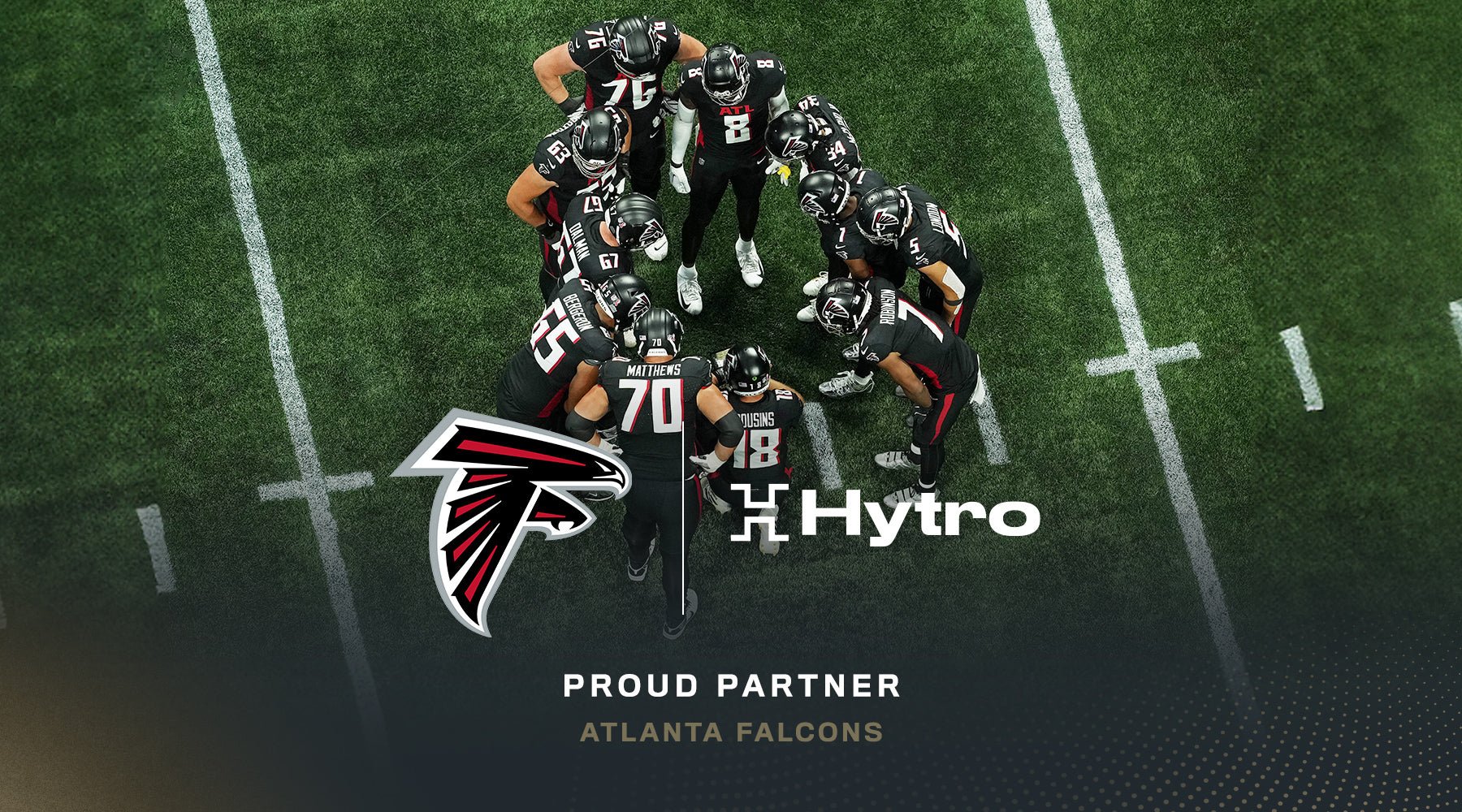Hockey is an incredibly demanding sport, requiring players to repeatedly perform explosive sprints, rapid direction changes, and intense physical contact, all within a short timeframe. The sport's high intensity and frequent collisions result in substantial muscle damage, fatigue, and muscle soreness, which can hinder performance if not managed effectively. Unlike some other sports, where players engage in more sustained aerobic activity over a larger field, hockey players experience repeated high-impact actions that place greater strain on specific muscle groups, particularly in the lower body and core.
Blood Flow Restriction (BFR) Training involves the use of a strap that tightens around the limb to temporarily restrict blood flow, creating a hypoxic environment in the muscles. This accelerates recovery by flushing away muscle damaging biomarkers while driving fresh nutrient rich blood into tissues, shortening recovery time, and enhancing performance. For ice hockey players, these benefits can be particularly advantageous.

Targeted recovery for high-impact muscle groups
Hockey players often experience significant muscle soreness and stiffness in their quadriceps and hip flexors and abductors due to the sport’s explosive nature. BFR’s ability to flush out metabolic by-products and reduce inflammation is crucial for these muscle groups. The delivery of fresh, nutrient-rich blood into muscle tissues post-BFR can help repair muscle tissue more effectively, particularly when used alongside recovery shakes that deposit glucose and proteins into the blood stream ready for BFR to drive into muscles. This process allows players to recover faster and return to the ice with reduced soreness and stiffness.
Enhanced recovery post-game
Given the intense and repetitive nature of hockey, Hytro BFR offers a quick and practical way to kick start the recovery process straight off the ice. Incorporating BFR into a periodised recovery plan will help manage the cumulative fatigue that builds up over a season. Hockey players, who may have multiple games in a week, can benefit from BFR's ability to reduce muscle damaging biomarkers while stimulating recovery hormonal pathways (MPS), and driving fresh glucose and proteins (from recovery shake or meal) into damaged tissues, together facilitating quicker recovery between games, keeping them in peak condition.

Mitigating the effects of physical contact
The physical contact inherent in hockey leads to muscle bruising and soft tissue damage. Passive Recovery BFR (BFR administered while relaxing), can accelerate the healing process for these injuries by promoting recovery hormone circulation and reducing localised inflammation. This makes BFR an ideal tool for hockey players who need to recover quickly from the physical toll of their sport.
Stacking modalities to boost the benefits
Integrating Recovery BFR with commonly employed recovery methods like hydrotherapy or stretching offers a powerful, synergistic approach to recovery for hockey players. While hydrotherapy, such as cold-water immersion (CWI), helps reduce inflammation and pain by producing Cold Shock Proteins (CSP), combining it with BFR significantly enhances overall recovery by reversing the MPS downregulation associated with CWI, promoting faster removal of metabolic waste via flushing, and increasing the delivery of nutrient-rich blood to the muscles. Stacking BFR along with other recovery modalities is only possible with Hytro BFR due to the simplicity and analogue design of the product, a conscious design choice to enable the use of Hytro BFR anywhere, anytime without limitations.
The combination of BFR and hydrotherapy has been validated by elite soccer players at Oxford United who reported feeling less sore, less joint pain, and less fatigued vs CWI alone, and anecdotal evidence shows that this synergistic benefit extends to contrast bathing (Cold<Heat) with BFR. Adding mobilisation and stretching further aids in maintaining flexibility and preventing stiffness, ensuring that hockey players recover more quickly and effectively, ready to perform at their best in subsequent games and practices. Since, this combination has been adopted by a wave of athletes from the Lakapi Samoa Rugby players to GB Cyclist Joe Truman to British tennis player Cam Norrie.

Tailoring recovery to sport-specific demands
While BFR is beneficial for athletes across all sports, its advantages align particularly closely with the demands of hockey as these athletes experience a high amount of localised muscle damage due to explosive movements, repeated high-intensity actions, and intense physical contacts. This high degree of cumulative stress points to BFR as an extremely appropriate and integral tool for accelerating recovery of hockey athletes.
Optimising recovery periods can be a challenge during multi-game weeks, but BFR can alleviate the stresses placed on the athlete when periodised and tailored in accordance with the symptoms the individual is experiencing. Stacking BFR with existing modalities, such as cooling or heating, will boost the effects of that modality with no additional time taken. These combinations can be chosen depending on the athlete's specific recovery needs on that given day. Using BFR strategically in this way between games to optimise recovery is extremely effective and accessible thanks to Hytro’s BFR wearables.
Talk to our team about how Hytro BFR can benefit your team's recovery and learn about how to periodise their recovery most effectively with BFR.






Leave a comment
This site is protected by hCaptcha and the hCaptcha Privacy Policy and Terms of Service apply.